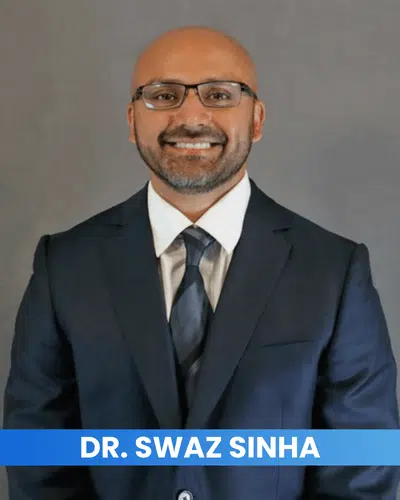Axis Spine And Orthopedics Fundamentals Explained
Axis Spine And Orthopedics Fundamentals Explained
Blog Article
Examine This Report about Axis Spine And Orthopedics
Table of Contents6 Simple Techniques For Axis Spine And OrthopedicsFascination About Axis Spine And OrthopedicsThe Ultimate Guide To Axis Spine And OrthopedicsThe Definitive Guide to Axis Spine And Orthopedics
An orthopedic doctor is a medical professional that specializes in dealing with issues of the bones, joints, and connective tissues, and ensuring you keep a healthy and balanced bone and joint system., we have extremely qualified orthopedic cosmetic surgeons that are qualified of dealing with people of all ages. I obtained involved in research study throughout my very first year of clinical school, and I started making links with orthopedic doctors early on.
Talk about the post-operative care plan with your specialist. Set up for transport to and from the health center on the day of surgery.
Some Known Details About Axis Spine And Orthopedics

Your doctor will supply lots of information concerning post-operative treatment, including exactly how to stay tidy and keep the medical area tidy. Adhering to these suggestions can prepare you literally and emotionally for your orthopedic surgical treatment. Keep in mind to maintain a favorable outlook and trust fund your medical group's competence, contributing to a smoother recovery process.

Or else, you'll just get confused. Believe regarding the big image. Nobody anticipates you to know anything, so don't attempt to memorize a bunch of random truths. Whether you're pursuing your kids, taking on treking trails, or flaunting your ideal dancing relocations, maintaining your bone and joint system in terrific shape is important. Or else, joint pain can truly ruin your life.
The constant pains in your knee or the tightness in your shoulder can reduce you down and make straightforward jobs tough. Usual problems treated by orthopedic doctors are: Cracks and Bone Injury: Broken bones and other injuries from crashes or impacts. Arthritis: Specifically osteo arthritis, which triggers joint pain and stiffness. Benign Soft Tissue Lumps: Non-cancerous developments in muscle mass or various other soft cells. Bone Cancer: Lumps in the bones. Bursitis: Swelling of the small sacs of.
Indicators on Axis Spine And Orthopedics You Need To Know
liquid that cushion the bones, tendons, and muscular tissues near your joints. Neck and Reduced Pain In The Back: Problems influencing the back. Orthopedic Injury: Serious injuries affecting bones, joints, or soft tissues. Sports Injuries: Issues like tendon splits, ligament injuries, and joint pain from athletic activities.
Sprains and Strains: Injuries to tendons and muscles. Tendinitis: Inflammation of the tendons. Orthopedic doctors do a selection of procedures to assist people with musculoskeletal problems. Common instances are knee and hip substitutes. Joint Reconstruction: Reconstructing a harmed joint to restore its feature. Bone Grafting: Taking bone from one part of the body and transplanting it to one more location to fix and rebuild harmed bones. Reconnecting Nerves: Repairing broken nerves to restore activity and experience. Back Disk Replacement: Replacing a harmed spine disk with a fabricated one to relieve discomfort and bring back function. You'll need to take and pass the Medical University Admission Test( MCAT). This standard examination assesses your knowledge and skills needed for success in medical institution. Medical school is an extreme

Axis Spine And Orthopedics - An Overview
Next, they complete an orthopedic residency. It's commonly five years and gives hands-on blog here learning in a clinical setting. Visits usually consist of: Discussing your signs, clinical history and way of living.
Treatment suggestions. Some problems require added imaging, like a CT check or MRI for even more extensive views of the agonizing area. Your orthopedist will suggest therapies to minimize symptoms up until you receive a medical diagnosis. Orthopedic cosmetic surgeons concentrate on nonsurgical and surgical methods. For sure kinds of orthopedic injury or hereditary conditions, surgery is typically the initial line of treatment. For most various other problems, orthopedists try nonsurgical therapiesinitially. It might take more than one type of treatment to attain long-term relief. Picking the right is critical for successful surgical outcomes and improved individual recovery. With a vast array of choices readily available on the market, it can be frustrating for both surgeons and patients to make an informed decision. The top 5 variables to think about when picking an orthopedic implant are surgical compatibility, cost-effectiveness, factors to consider for alteration surgery, patient-specific elements, and the style and innovation of the dental implant. They are available in various shapes, dimensions, and products, each offering a specific function based on the person's requirements. Comprehending the fundamentals of orthopedic implants is important prior to diving into the decision-making procedure. One of the leading considerations when selecting an orthopedic implant is its compatibility with the surgery. Various implants are developed for different surgical techniques and methods. The orthopedic implant must be specifically developed to fit the patient's makeup and make certain stability throughout the healing process. Surgical compatibility includes elements such as implant size, form, and product. The success of orthopedic procedures depends heavily on the correct choice and placement of implants that are suitable with the client's composition and case history. By focusing on client safety and well-being, orthopedic cosmetic surgeons can achieve effective outcomes and provide the finest quality of like their individuals. Specialists have to thoroughly think about the biomechanical buildings of the implant and exactly how it will incorporate with the person's bone structure. This will add to far better surgical end results, decreased problems, and shorter recovery time. When choosing implants for a client, it is important to think about a selection of patient-specific aspects that can influence the success and end result of the procedure. These aspects encompass the individual's age, bone quality and quantity, oral health and wellness condition, case history, way of life behaviors, and visual choices. For older people with endangered bone thickness, much shorter implants or implanting procedures may be valuable to provide the essential stability and assistance. 3. Is the dimension of the orthopedic implant an essential consideration? Exactly how does it influence the surgical treatment and the patient's recovery? Yes, the size of the dental implant is essential as it must match the patient's framework for correct fit and functionality. 4. Can the client's age and lifestyle contribute in selecting the most suitable orthopedic implant? Absolutely. How does the expense of an orthopedic dental implant factor into the decision-making procedure, and are there ways to balance top quality with affordability? The price of the implant is a crucial factor to consider, yet it ought to not be the sole determining factor. Balancing quality with cost includes evaluating different implant alternatives 'long-lasting advantages and prospective issues. Report this page